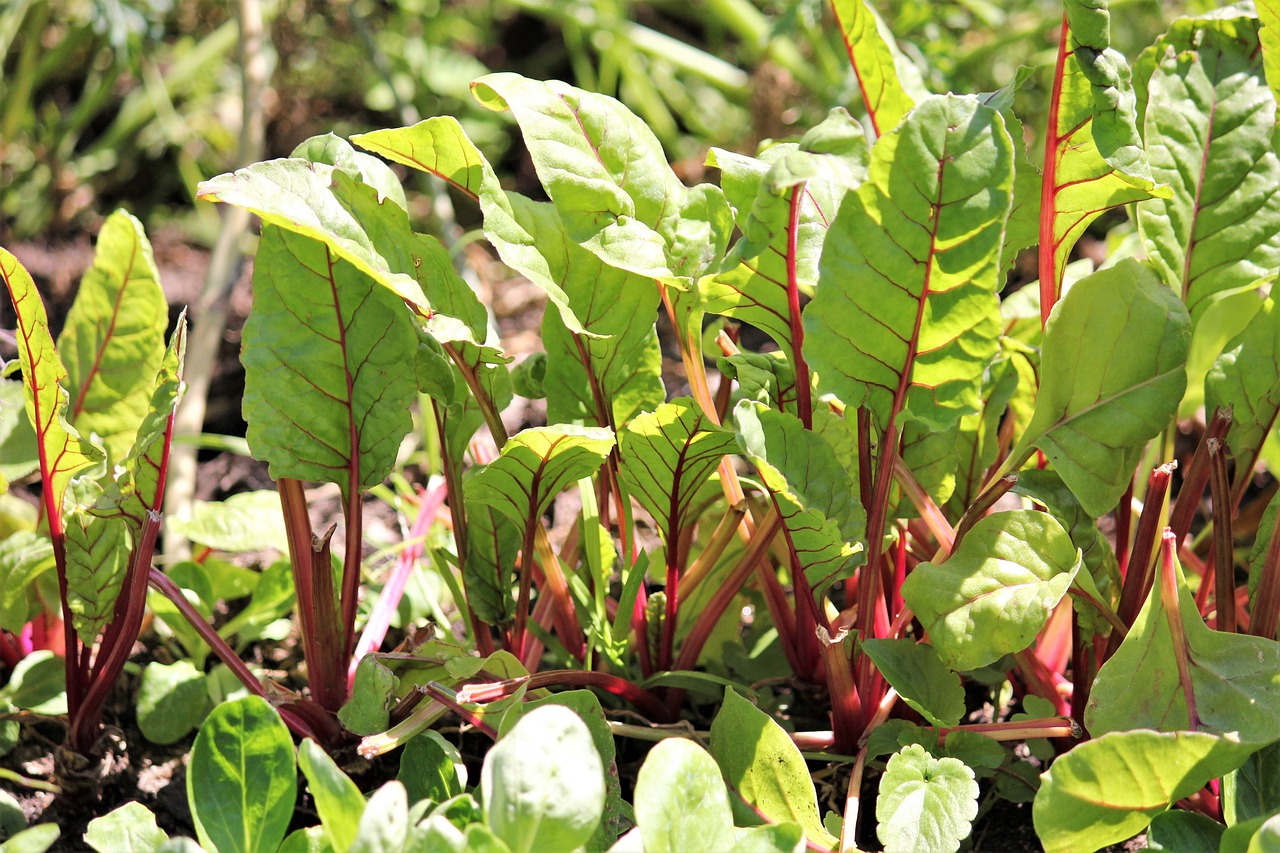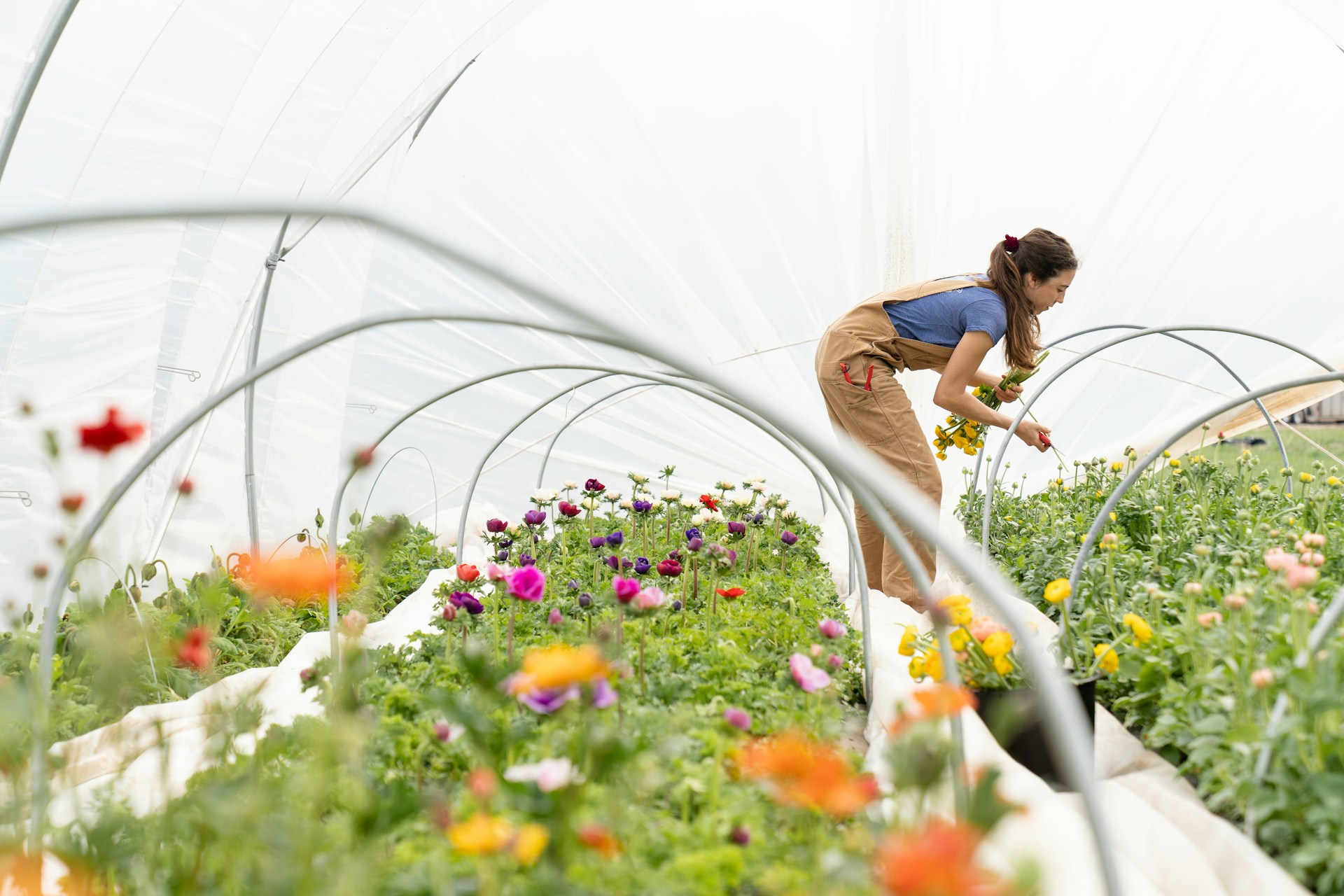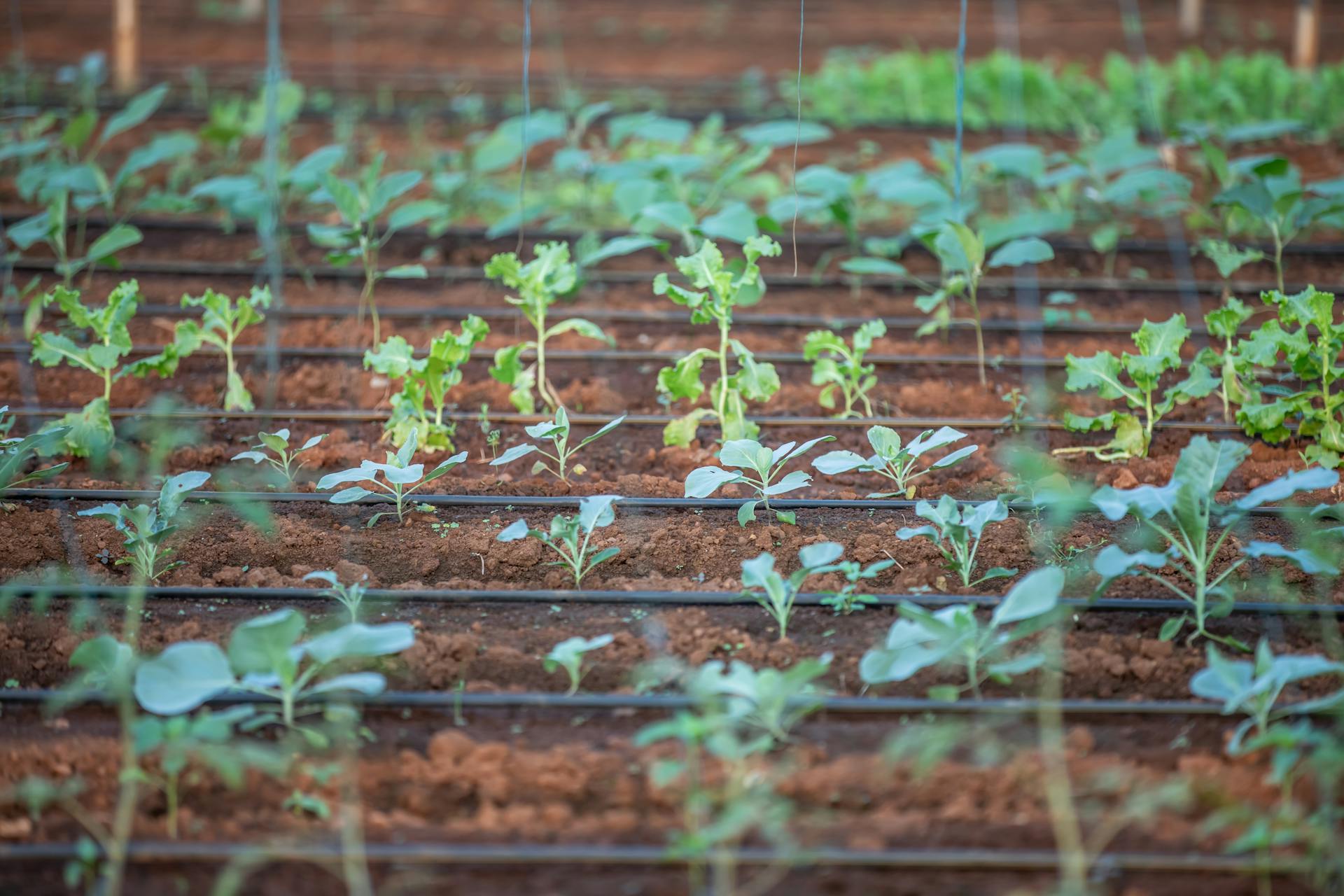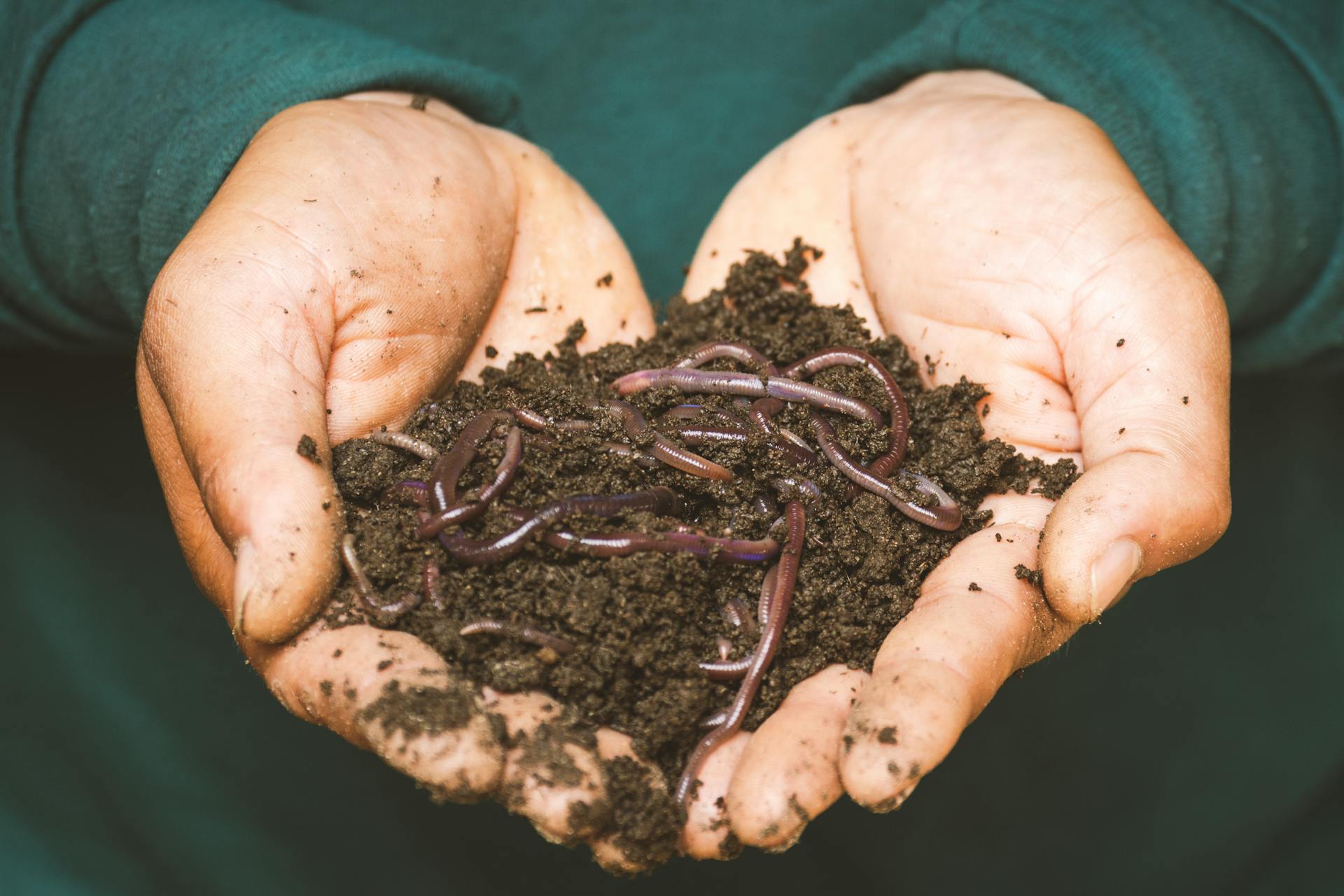Raised bed gardening is a term that is gaining popularity with homeowners who don’t want to or can’t dig into their soil. I’m a prime example of someone who didn’t know what this term was until I purchased my home.
But as you’ll find out shortly, raised bed gardening was perfect for my family and might be for yours, too.
What is Raised Bed Gardening?
Raised bed gardening is just like it sounds: raised beds that sit on the ground and are filled with soil for gardening. You create a bed that houses the soil or buy one, fill it with the appropriate soil and begin planting your seeds or seedlings (or transplants).
Confused?
Check out this picture below. These are some of the raised beds that I purchased, and we’re growing a bunch of goodies in them. The bed is surrounded by chicken wire to stop the pesky deer from eating everything, but inside is all of the soil and plants that I planted.
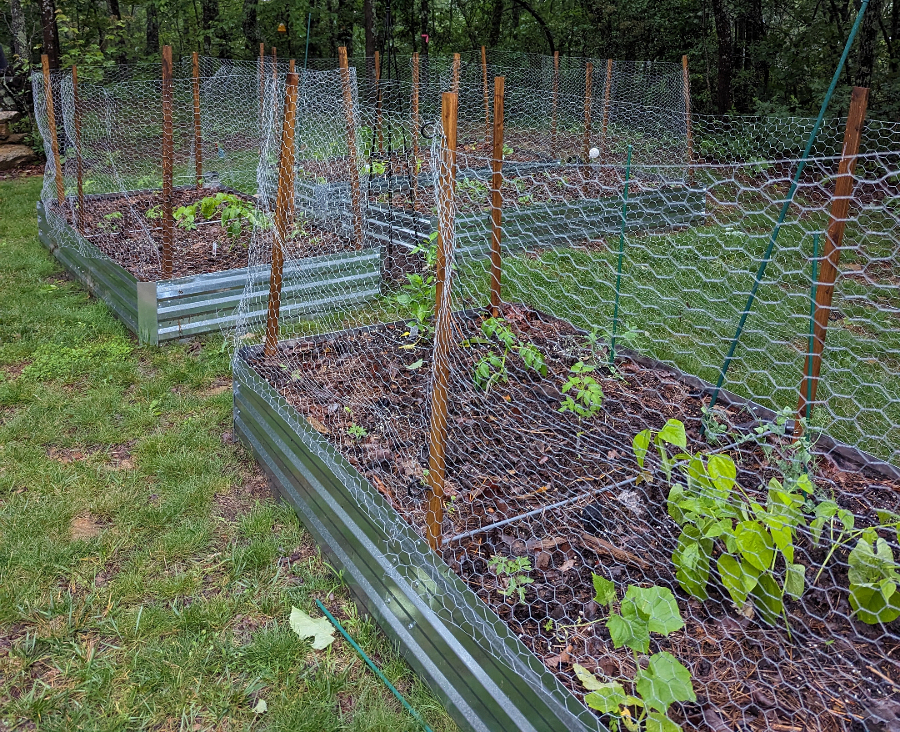
Build or Buy a Raised Bed?
We have a steel raised bed because it was the most practical choice at the time, and there was an amazing sale going on at the time. However, you’ll find beautiful beds that some people make out of wood that look like works of art.
Should you build your own raised bed or buy one?
Let’s see the key differences:
Building a Raised Gardening Bed
If you’re handy or don’t mind taking the do-it-yourself approach, you can build your own raised garden bed. There are plans for building these beds, but they’re not complicated if you’re just making a rectangular bed.
Here are a few of the many reasons you may want to make your own bed:
- You can choose the bed size that you want
- It “might” be cheaper, depending on your material choice
- It’s a ton of fun
Common materials for building a bed are:
- Brick: Expensive but durable and adds a nice hardscape element to your space. You can also keep out more critters with brick than with other materials, but these resilient buggers often find a way into your bed anyway. Concrete bricks and even cinder blocks can be used to make your bed.
- Wood: Depending on lumber costs, you can often build a bed for under $100. If you use cedar (which is an amazing wood and one that I would buy if I had the budget), it may cost slightly more to build a bed. A 4’ x 4’ x 1’ cedar raised bed will cost somewhere around $100. Pressure-treated wood should be cheaper and around $50.
- Metal: You can use metal to make your own beds, but I’m not 100% sure how much this would cost.
If you have recycled materials that you can repurpose, you can save a ton of money going the DIY route.
You’ll also find other plans that use metal for the bed and can be done with a DIY approach. Some plans are even for a true raised bed that has legs and is much higher off the ground, but they’re very limited in terms of size, space and what you can grow.
Depending on the plan you choose, it can take one hour to build or an afternoon. If you’re handy, your bed will be up in an hour or so and ready for you to add soil.
Buying a Raised Gardening Bed
If you just want to get started with your raised bed, you can purchase them at:
- Home Depot
- Lowes
- Amazon
- Garden centers across the world
What will you pay?
- Amazon is selling the one we have in our garden for just $55, and it’s made from galvanized steel. The bed normally sells for $110.
- Home Depot has a beautiful 8’ x 2’ wooden raised bed for $79.99, but prices go up to $200+.
- Lowes has higher prices than Amazon and Home Depot, with a 2’ x4’ bed costing $90. I’m sure that you can find deals that bring these prices down a lot.
Our raised bed has a one-foot height. The height does require you to get on your knees to tend to the bed or sit on a chair. If you have issues with kneeling or getting up off of the floor, some beds have a height of 2 – 3 feet. You’ll have an easier time tending to the bed, but you’ll need a substantially larger quantity of soil.
For the prices of the beds for sale right now, it often makes more economical sense to buy one than build one yourself. If you have wood lying around or even trees that you’ve cut down, you can use this material to make your bed, too
Filling Your Bed
You have a bed garden in place, but you’re missing something: soil. Vegetable gardens need rich soil for crops to grow. You can purchase soil from the store that will be rich in organic material, but raised bed soil can be very expensive.
We decided to add a lot of store-bought soil to our beds and fill the bottom with logs and sticks because they will decompose over time and feed the soil. We also make our own compost and add it to the beds every year before planting.
You can do something similar. You’ll need to fill your bed with:
- Topsoil
- Compost
- Perlite
- Potting soil
If soil compaction is too high, it won’t drain properly and the plant roots may struggle to get through. Plant material and wood at the bottom help limit the amount of additional soil you’ll need in the bed and add organic material to the soil structure.
However, there is a fine balance in the material choice that is beyond this article. But we know that filling your bed properly is crucial to your plant growth.
We have a great guide on this topic, which is a must-read for anyone that is scratching their head and wondering what soil mix is suitable for their bed.
Read the full article: How To Mix Soil For Raised Bed Gardening.
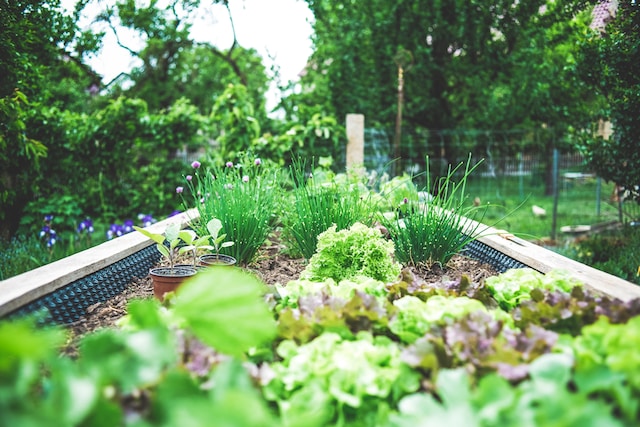
What Can You Plant in a Raised Garden Bed?
You have a bed with soil and a beautiful garden spot to call your own, but what can you grow in your bed?
Just about anything you want, including:
- Asparagus
- Basil
- Beans
- Beets
- Bell peppers
- Broccoli
- Carrots
- Celery
- Cucumbers
- Eggplant
- Garlic
- Green beans
- Kale
- Onions
- Peas
- Potatoes
- Radish
- Spinach
- Squash
- Sweet potatoes
- Swiss chard
- Tomatoes
- Zucchini
- So much more
Herbs are a good first experiment. You’ll also find flowers grow easily and you may have a hit or miss with certain items. Last year, my melons didn’t do well at all, but you would swear that I’m a master tomato grower who has been doing this for a lifetime.
You can grow:
- An entire garden
- Edible garden
- Flower garden
- Anything you want
Square foot gardening is perfect in a planting bed and will turn you into a resourceful gardener who can grow annual flowers, fruits and vegetables even if you have limited space.
But you do need to plan your bed properly because spacing matters so much when it comes to growing in a bed.
Planning Your Raised Gardening Bed
Crops need space. A tomato plant alone needs to have two feet of space between it and the next plant. Some tomato plants need three feet of space between them, and they can grow really tall.
The first year in our garden, we had adequate spacing between plants, but we didn’t realize that tomato leaves get pretty big and “blacked out” some of the other plants that we planted. We had a ton of tomatoes that year, but the one bed just didn’t have enough spacing between the varieties that we grew.
What could we have done differently?
Plan.
If a plant says that you need 2 – 3 feet between them, be sure to do 2.5 to 3 feet spacing just in case.
You can also use planning guides that help you maximize your bed space.
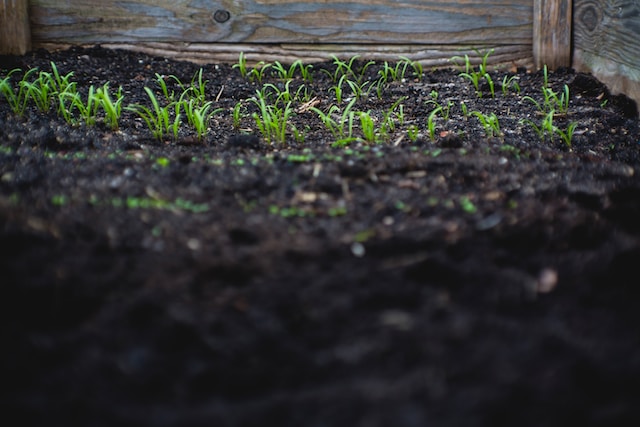
Benefits of Raised Gardening
Gardeners put a ton of time and effort into their gardens, so there must be a benefit to raised gardening. Right? Absolutely. I’ve found that in our garden at our current house, it’s been a lifesaver because of our soil.
However, compared to gardens in the past, we’ve found raised gardening to be very beneficial because of:
- Yields: You can get great yields out of your bed and even eliminate some pests if it’s off the ground. Planting in higher densities allows you to get the most out of smaller spaces.
- Soil condition: You have full control over the soil that you put into your raised bed. If you do everything right, you’ll have well-draining soil filled with nutrients, making it easy to grow your desired fruits and veggies.
- Accessibility: Raised beds are usually one-foot or higher off of the ground, making them accessible for people of all ages. You can also find beds that are two to three feet high, making it super easy to tend to, even if you’re seated.
But this is just the start of the benefits of raised bed gardening. You’ll love the freedom that this form of gardening offers you.
What Is The Point Of Raised Bed Gardening?
Why not just dig in the dirt? Right? It’s a lot of work to plan out a raised bed, fill it with soil and maintain it over the years. However, it’s a great option if you have soil that is:
- Rocky
- Not nutrient-rich (and you don’t want to revitalize it)
- pH levels are too high or low for the crops you prefer
You can add nutrients to your soil or balance out your pH, but if you want to just grow your fruits and veggies without the hassle, a garden box is the perfect choice. Soil amendments can be tricky because you need to keep a pulse on the soil conditions until you get it just right.
Soil also makes it hard to garden.
When we bought our house on top of the mountain, we thought: great, we’re going to have a massive garden. Once the shovel hit the ground and went an inch in, we were met with rock – lots and lots of rock.
And this isn’t just any rock. We’re on mounds of granite, which ranks between a 6 or 7 on the Mohs hardness scale. Breaking the rock up is a feat of human strength and many of the rocks are big. I’m talking some of them are hundreds or thousands of pounds.
It’s everywhere.
So, what is raised bed gardening? A way for us to garden without needing to dig up half the mountain to do it.
You also benefit from creating your own nutrient-rich soil mix with the right pH level for the crops you plan to grow.
You can even have a raised bed in a small townhouse lot, condo or other small spaces where a traditional garden won’t work well.
Raised bed gardening is all about freedom and the ability to grow crops on your land – big, small or difficult to tend.
